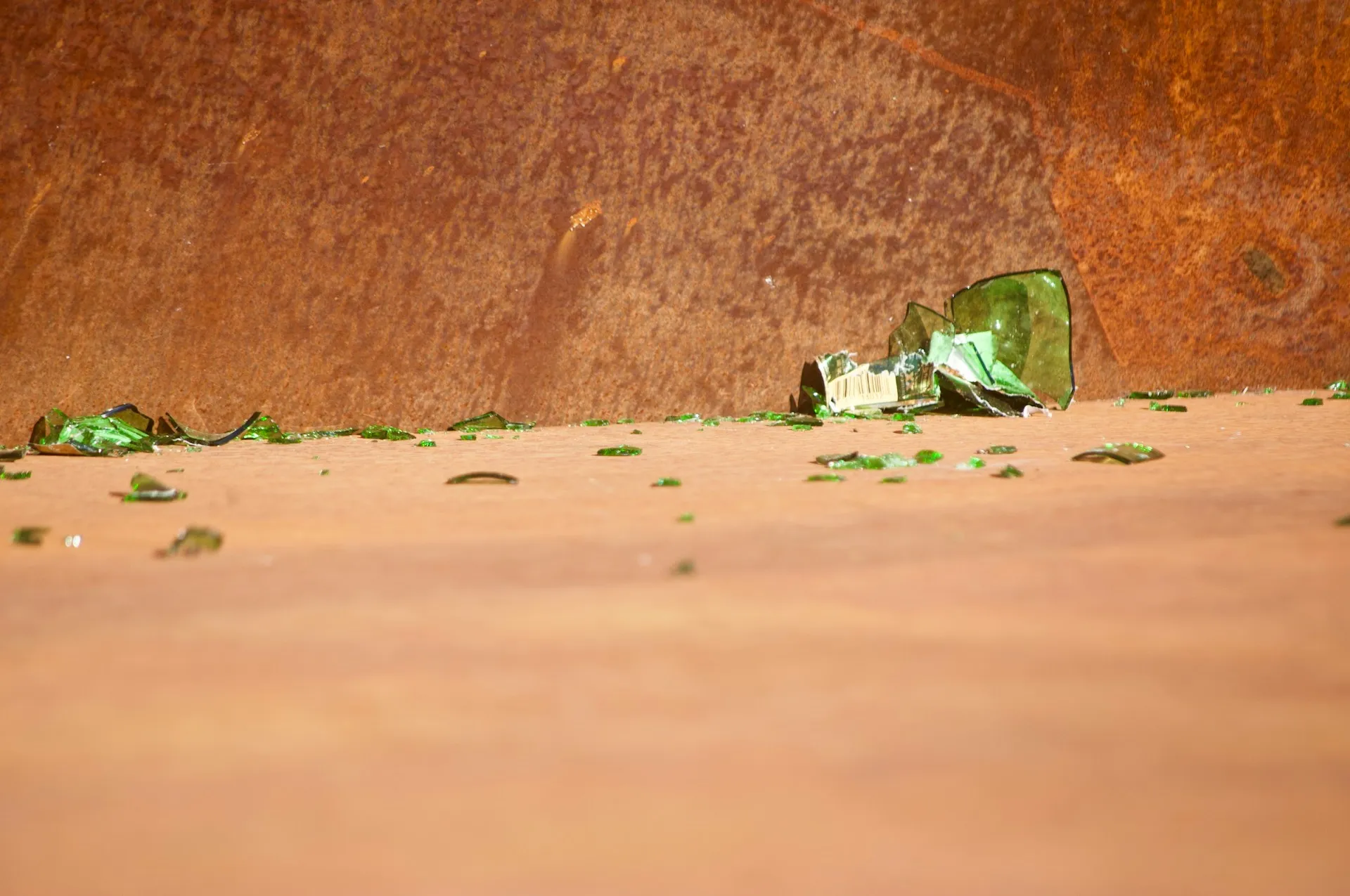Welcome to the Broken Container exhibit.
The remnants of this once-intact vessel are displayed in fragments, revealing both its beauty and its fragility. The container, with its subtle light-green hue, was likely designed for everyday use, perhaps holding liquids, spices, or small treasures. Its fractured surface now reflects light in new, unpredictable ways, casting shadows and glimmers that draw attention to the intricate play of transparency and opacity. The broken edges, jagged and sharp, are a stark reminder of the container’s fragility, contrasting with the delicate curves that remain intact.
The light-green tint of the glass suggests the presence of iron impurities in the sand used to create it, a common feature in ancient and early modern glassmaking. This type of glass, often referred to as forest glass, was prized for its slight coloration, which added aesthetic value without diminishing its practical use. The process of crafting such a container would have involved skilled glassblowers carefully shaping molten glass into form, followed by a cooling process in which imperfections, like air bubbles or minor discolorations, could manifest. Despite these minor flaws, the container would have been a functional, elegant piece, now forever altered by breakage.
Though shattered, the container now occupies a different space in our understanding of utility and aesthetics. No longer a functional object, it becomes a vessel of history and memory, with each crack and missing piece adding to its narrative. The broken container stands as a symbol of fragility—both in the physical sense and in the impermanence of the objects we create and rely on. It invites reflection on how the beauty of an object can endure even after its original purpose has been lost, transforming destruction into something contemplative, if not entirely whole.
 Museum of Broken Things
Museum of Broken Things
